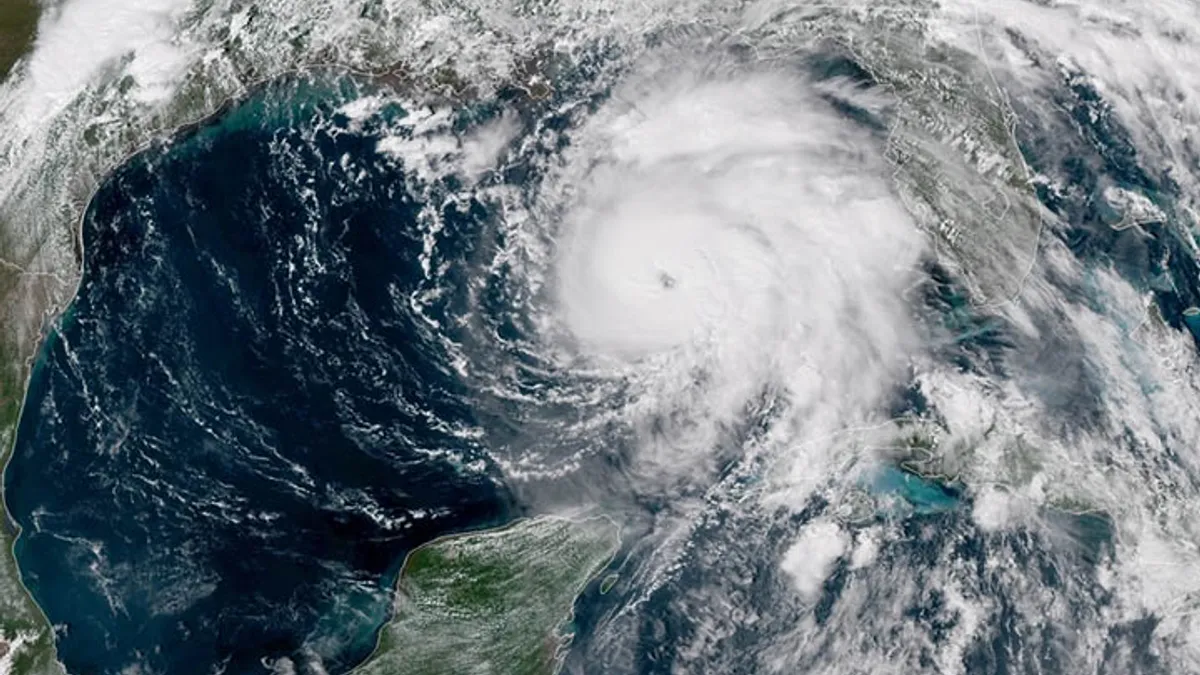Dive Brief:
-
Hurricane Michael will be the strongest ever storm to hit the Florida panhandle when it makes landfall Wednesday as a Category 4 hurricane, the Weather Channel reports.
-
Gulf Power, whose territory is expected to take the brunt of the storm, projects up to a quarter million outages and is warning its customers to "be prepared for tropical storm-force winds, which could lead to prolonged, widespread outages."
- Duke Energy's Florida territory is expected to take a hit as well. The utility projects up to 200,000 outages as a result of the storm and has a contingency plan to ensure they are prepared to manage high numbers of outages, Duke senior communications consultant Peveeta Persaud told Utility Dive.
Dive Insight:
Gulf Power experienced minimal damage during Irma, but its territories along the upper Gulf are more vulnerable this time.
The utility said the greatest impact within its territory will likely be around Panama City, which is projected to get 6-9 foot storm surges, if those surges occur at high tide. As of early Wednesday evening, the utility reported 119,295 customers without power and projected it could face 225,000 outages.
"With a storm of this magnitude, power restoration in the hardest hit areas may take up to a week or more due to anticipated storm impacts," Rick DelaHaya, Gulf Power spokesperson, said in a press release.
The storm will be a test for Duke Energy Florida, whose outage management system failed last year during Hurricane Irma. That system allows the utility "to identify and communicate estimated times of restoration," Persaud told Utility Dive.
The issue was noted by several city governments in a Florida Public Service Commission (PSC) report, released in July, which said it was "difficult to establish [a] reliable line to communicate" with the utility.
Almost 1.3 million of Duke's customers were without power during Irma, which made landfall in the southwest part of the state and moved northeast.
However, Duke says it has "back up plans in place" to better communicate with its customers this season. In addition, the utility's grid-hardening efforts include vegetation management, a "self-healing grid" which automatically reroutes around outage areas to reduce impact, and infrastructure hardening, according to Persaud.
Tampa Electric Power Company (TECO) is "not anticipating significant impact from this storm, based on its current path," company spokesperson Cherie Jacobs told Utility Dive via email. The Tampa/St. Petersburg area could see two to four feet of storm surge if the surge occurs at high tide, according to Weather Channel reports.
Although the PSC's July report found utility hardening efforts were going well, it also revealed low satisfaction among customers and cities on coordination and restoration time. The report attributes this to "rising customer expectations," despite improvements.
Other key findings of the report found that underground equipment is more resilient than overhead equipment, hardening of overhead distribution equipment, including wooden transmission poles, is effective and Florida utilities were overall more resilient compared to the 2004-2005 hurricane season.
Two of the state's largest utilities, Florida Power and Light and Duke Energy Florida committed to "targeted undergrounding programs" beginning in 2018. Duke's program is anticipated to roll out over the next 10 years and has "begun a few projects." Their north Florida territory that's vulnerable to this storm is scheduled for construction later this year.















